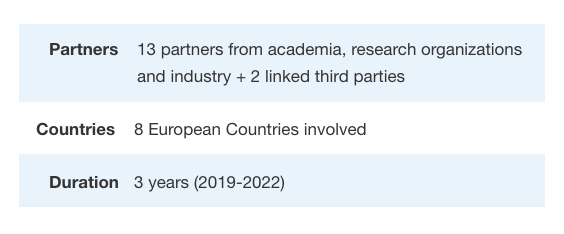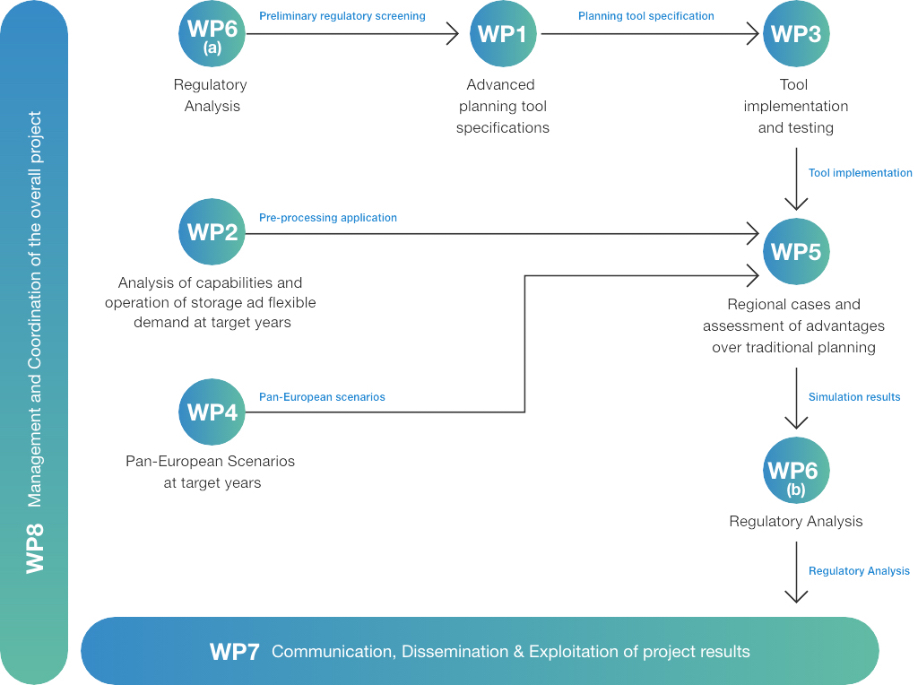The FlexPlan project aims at establishing a new grid planning methodology considering the opportunity to introduce new storage and flexibility resources in electricity transmission and distribution grids as an alternative to building new grid elements. This is in line with the goals and principles of the new EC package Clean Energy for all Europeans, which emphasizes the potential usage of flexibility sources in the phases of grid planning and operation as alternative to grid expansion. In sight of this, FlexPlan creates a new innovative grid planning tool whose ambition is to go beyond the state of the art of planning methodologies, by including the following innovative features: integrated T&D planning, full inclusion of environmental analysis, probabilistic contingency methodologies replacing the N-1 criterion as well as optimal planning decision over several decades. However, FlexPlan is not limited to building a new tool but it also uses it to analyse six regional cases covering nearly the whole European continent, aimed at demonstrating the application of the tool on real scenarios as well as at casting a view on grid planning in Europe till 2050. In this way, the FlexPlan project tries to answer the question of which role flexibility could play and how its usage can contribute to reduce planning investments yet maintaining (at least) the current system security levels. The project ends up formulating guidelines for regulators and for the planning offices of TSOs and DSOs. The consortium includes three European TSOs, one of the most important European DSO group, several R&D companies and universities from 8 European Countries (among which the Italian RSE acting as project coordinator) and N-SIDE, the developer of the European market coupling platform EUPHEMIA.
An innovative grid planning methodology
Why FlexPlan?
• High-speed deployment of RES (challenging European target: 32% at 2030) is making T&D planning more and more complex and affected by a high level of uncertainty
• Grid investments are capital intensive and the lifetime of transmission infrastructure spans several decades: when a new line is commissioned it might be already partially regarded as a stranded cost • Building new lines meets more and more hostility from the public opinion, which makes planning activities even longer and affected by uncertainties
• There is an on-going debate on the selection of storage technologies and system flexibility, able to make the overall generation-set behaviour more predictable and schedulable
Hence the idea of a grid expansion tool for analysing storage and flexibility as alternative to new T&D lines; incentivization procedures could be put in place by the regulators wherever consistent advantages are seen.
The project in brief

Overall project layout

The Structure

The independent point of view of the European Stakeholders
“[…] Reinforcement should always be compared with getting flexibility from the resources in the system and the optimal solution should be determined. Typically, non-frequent congestion could be more efficiently treated with the activation of flexibility whereas prolonged or high levels of congestion could call for a system reinforcement.”
From the document: «An integrated approach to Active System Management with the focus on TSO-DSO coordination in congestion management and balancing» (CEDEC, EDSO, ENTSO-E, Eurelectric, GEODE)
“[…] Energy storage or relocation of consumers and production units can help to remedy temporary congestions in the transmission network. […] When performing a cost-benefit analysis, it is therefore important to also compare increased transmission capacity with alternatives that have the potential to be a more economically efficient way of achieving the same objective.”
From the document: “Cost-benefit analysis of investments in the transmission network for electricity” – document Energimarknadinspektionen R2018:12 – April 2018
“[…] The network development plan shall also demonstrate the use of demand response, energy efficiency, energy storage facilities or other resources that distribution system operator is using as an alternative to system expansion”
From the Directive of the European Parliament and of the Council on common rules for the internal market in electricity (recast)
“Article 54 – Ownership of energy storage facilities by transmission system operators
- Transmission system operators shall not be allowed to own, develop, manage or operate energy storage facilities
- In derogation of paragraph 1, Member States may allow transmission system operators to own, develop, manage or operate energy storage facilities which are fully integrated network components and the regulatory authority has granted its approval or, if all of the following conditions are fulfilled:
- other parties […] could not deliver these services at a reasonable cost and in a timely manner
- such facilities or non-frequency ancillary services are necessary for the transmission system operators to fulfil their obligations under this Directive for the efficient, reliable and secure operation of the transmission system and they are not used to buy or sell electricity in the electricity markets
- the regulatory authority has assessed the necessity of such derogation”
From proposal for a Directive of the European Parliament and of the Council on common rules for the internal market in electricity (recast)
